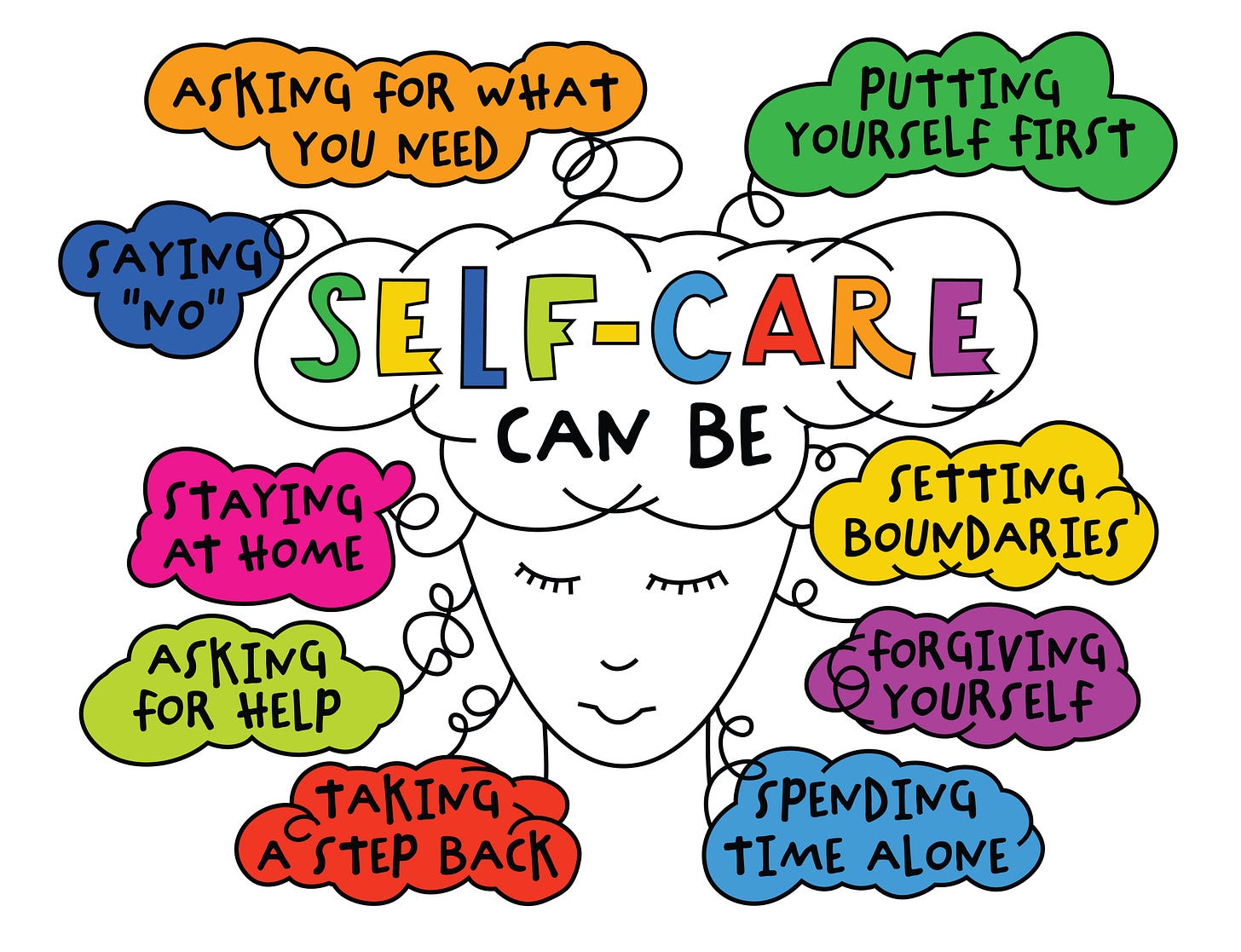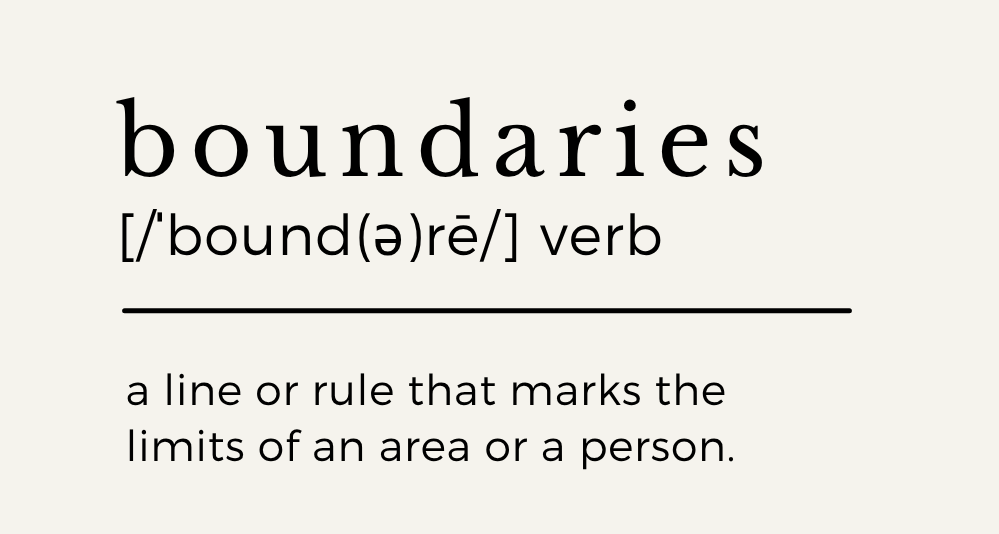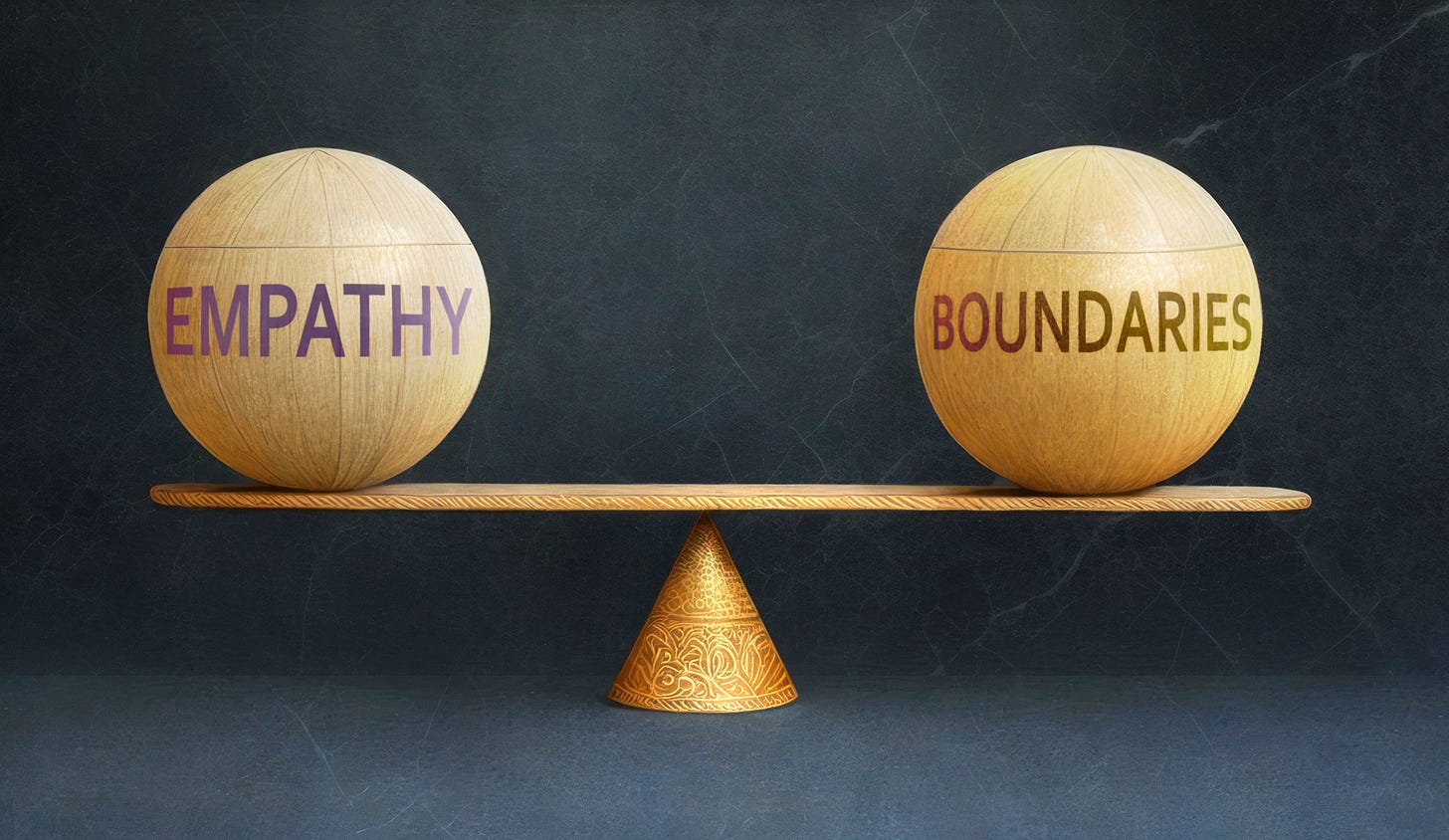A Four Step Guide to Better Boundaries
Wisdom for those learning that “no” can be love too.
This post was inspired by a conversation about setting boundaries with an emotionally absent parent. It was written on a plane, seat 29A, next to a couple who are sharing a pair of headphones, watching a movie on an iPad 30,000 ft above the ground.
Setting boundaries is essential for identity development and self-worth; yet, many of us grew up believing that doing so was selfish. We were taught to center others, to be agreeable, and to equate self-sacrifice with love. But boundaries aren’t barriers; they’re guides that help us value who we are and what we need, not just what we can do for others.
For years, I struggled with this. I prioritized being liked over being authentic, afraid that expressing my needs would make me seem ungrateful or difficult. Imposter syndrome whispered that I should be thankful just to be chosen and that I didn’t have the right to say no. So, I overextended myself in every space — home, work, and community, consistently mistaking performance for love.
Without boundaries, you become depleted, cynical, and disconnected. You keep letting people ride in your car who can’t — or won’t help you fill the tank, and then wonder why you’re always running on fumes. The truth is, boundaries don’t push people away; they help you see who’s willing to meet you where you are.
Your lack of boundaries isn’t just draining your energy; it’s keeping you misaligned. It’s preventing you from connecting with the people, places, and spaces meant for you because it stops you from showing up as your whole, authentic self.
We’re not superheroes. We’re human. And honoring our limits isn’t selfish — it’s sacred. Saying no is not rejection; it’s a matter of self-respect. Every boundary you set is a step back toward yourself. A reminder that your peace, energy, and truth are worth protecting.
What Are Boundaries?
Healthy boundaries are the limits you place around your time, emotions, body, and mental health to stay resilient, solid, and content with who you are. These empowering borders protect you from being used, drained, or manipulated by others.
Unfortunately, many people with marginalized identities (such as non-white individuals, women, disabled, and queer people) have been masking for so long that they don’t even realize they are hiding their needs.
If you find yourself in this situation, consider the following three ways to determine if you need stronger boundaries.
You attract things and people that depend on your production and benefit from your convenience.
You fear that your relationships will end or look significantly different if you do not meet expectations.
You consistently feel pressure to perform and even over-perform to prove your value.
Each of these factors is an indication of a lack of personal boundaries that can lead to personal disconnection, life dissatisfaction, stress, resentment, anger, and ultimately burnout, as you neglect your needs at your own expense.
The hardest thing about setting boundaries when you haven’t is believing that you can have boundaries because it’s hard to reclaim personal power if you are used to giving it away. Since I started standing firm on my boundaries, my life has changed for the better because I am now in alignment with my needs, rather than at the whim of someone else’s.
Four Lessons on How to Maintain Boundaries
I didn’t just arrive here overnight, so here are four things I’ve learned that help me maintain my boundaries.
1. Your Boundaries Are For You
Boundaries used to be difficult for me because I focused on what others were doing instead of how I was responding. I thought boundaries were about changing people’s behavior. I wanted people to treat me better, show up differently, or finally meet my needs. But that approach left me constantly frustrated, doing things I didn’t want to do and staying connected to people who never considered my needs in return.
Instead of asking, What do I need? I tried to manage everyone else’s choices because I was afraid to say no and stand firm in my own. That fear of conflict, loss, or being misunderstood disguised itself as control — and control disguised itself as care. But boundaries are not about control; they’re about self-respect.
I once listened to someone vent about her father’s emotional distance — how closed off he was, how hurtful it felt, how she couldn’t understand why he wouldn’t change. It was a familiar pain. For years, I too tried to make people more emotionally available so I could finally feel seen. But at some point, I learned the hardest truth: you can’t control how someone shows up, only how you engage. Freedom comes when you stop trying to rewrite someone else’s story and instead take responsibility for your own peace.
Boundaries aren’t punishment. They are self-preservation. They remind us that we are responsible for our emotional energy, how we participate, how long we stay, and how much access we allow. Once I understood that, I stopped trying to fix other people and started honoring myself.
2. Know Thy Limits
Boundaries require an honest acceptance that you cannot do it all — even when you want to. The question then becomes: Where are you placing your value? Is it in the perception that you can handle everything flawlessly, or in the truth that you are still worthy even when you can’t?
Self-love means honoring your limitations, not dismissing them to prove your worth. If you weren’t meant to be where you are, you wouldn’t be there. Your presence is already proof of your value. Boundaries, then, are not selfish — they are acts of self-preservation and love.
Each time you set a boundary, you affirm that your well-being matters more than the immediate demand in front of you. You remind yourself that protecting your energy is not avoidance, it’s alignment. It’s the difference between showing up whole and showing up hollow.
Sometimes that boundary looks like limiting contact with someone who repeatedly harms your peace, rather than answering every call, hoping they’ll change. It’s not rejection, it’s recognition. You can’t pour from an empty cup, and you can’t build from burnout. Boundaries make space for your best self to exist, not your most depleted one.
3. Accept the Reality
One of the hardest lessons in boundary work is learning to see people as they are, not as you believe they should be. We often judge someone’s actions through the lens of our own standards based on how we would show up and how we would respond. When they don’t meet that level, we feel disappointed, hurt, or disrespected.
But as the elders say, when someone shows you who they are, believe them.
We all carry expectations of friends, partners, parents, supervisors, and even institutions. But when those expectations go unmet, you’re faced with a choice: continue to engage and compromise your peace, or accept the situation for what it is and stay true to yourself. Don’t lower your needs to meet someone else’s capacity, even if you believe they could or should do better. It’s the waiting and the hope that they’ll change that keeps us stuck in cycles of disappointment, pouring ourselves into cups that can’t hold what we give.
Accepting reality doesn’t mean cutting everyone off the moment they fall short; it means operating within the truth of the situation, not the fantasy of its potential. It means knowing how much you’re willing to invest and recognizing when you’ve done all you can. When you see clearly, you stop confusing endurance with love — and you begin choosing peace over potential.
4. Boundaries versus Walls
Boundaries are rules for engagement; walls end engagement altogether. When you build a wall, you shut yourself off — not just from others, but from your own emotional flow. Eventually, there comes a time when you lower that wall, but without the practice of self-love, it can be hard to recognize what safety actually feels like. You’ve denied yourself the chance to learn, in real time, who belongs in your life and who doesn’t.
Walls often replace boundaries when we feel powerless to change our situation. They form after repeated experiences of having our boundaries ignored, dismissed, or violated. Whether conscious or unconscious, the wall becomes our way of saying “never again.”
Still, there are moments when a wall is necessary — when someone continually disrespects your boundaries and refuses accountability. In those cases, the wall isn’t avoidance; it’s protection. But the goal is not to live behind it forever. The goal is to heal enough to return to discernment — to know when to set a boundary, when to walk away, and when to let someone in.
Conclusion
For much of my life, I confused being needed with being loved. I said yes to everything because I was afraid that saying no would make me unworthy, replaceable, or misunderstood. But I’ve learned that boundaries are not barriers; they are expressions of self-worth. They remind us that our value isn’t measured by how much we give, how much we tolerate, or how well we perform.
I hope that the tools and reflections shared here help you begin honoring your own limits with compassion, clarity, and courage. Because when you stop abandoning yourself to be accepted, you finally align with the people and places that were meant for you all along.
Support Divergenthood
✨ If you’re enjoying Divergenthood, I’d love your support. You can leave a comment, share this post with a friend, upgrade your subscription, or even buy me a coffee. Every gesture—big or small—is a universal encouragement that keeps me writing and creating for this community.
Thank you for being here. 💜





Thank you for writing this. I needed the reminder to work on boundary building. It is also a great reference for explaining to others why boundaries are important. It also helps by clarifying that self accountability is part of the task. A lot of people view boundaries as just being obstinate or refusing other people's requests.